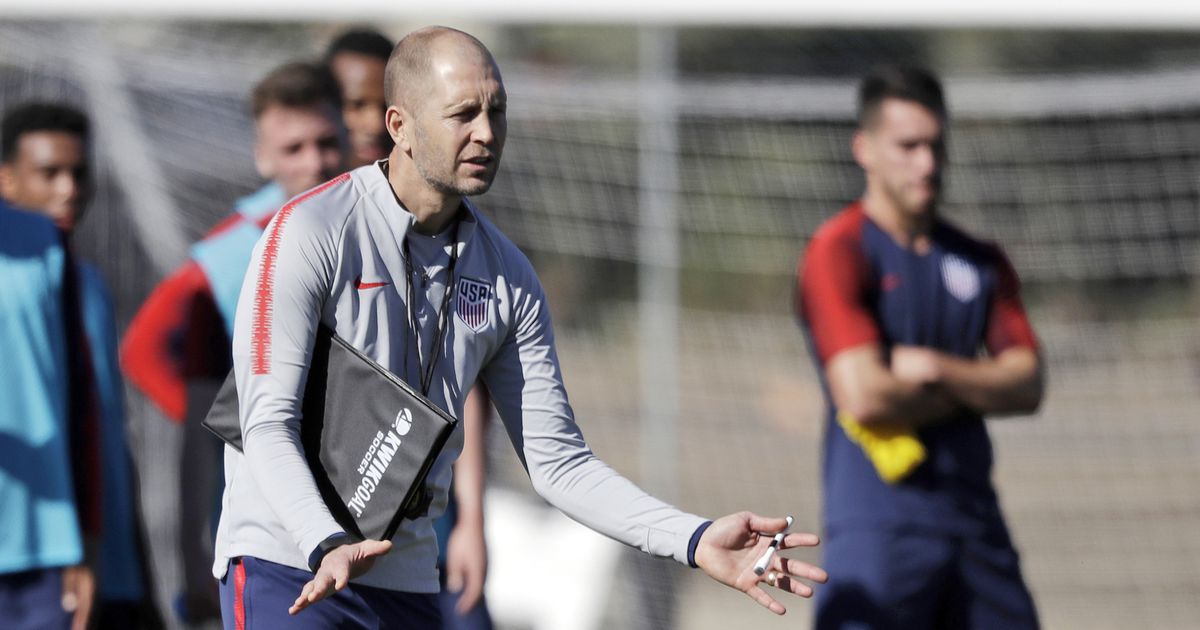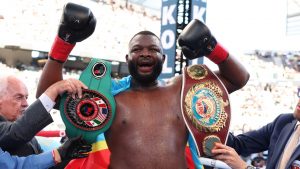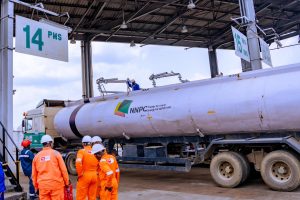Berhalter trying to transform US into possession-based team


DAVENPORT, Fla. (AP) — Gregg Berhalter prepares for U.S. national team matches like a CEO getting ready for a deal.
The new American coach uses video presentations when he meets with foreign-based players via computer. He has tripled the team’s data analysts to three.
Two white boards are on the grass at training sessions, one with the day’s objectives and schedule, the other with magnets to denote formations.
“I’ve been amazed the first few days just how much information he’s got across and how he wants every guy to be on the same page and have a perfect understanding of how we want to go into the game,” star midfielder Christian Pulisic said ahead of Thursday’s exhibition against Ecuador in Orlando.
Hired in December as the fourth U.S. coach in a little over two years, Berhalter has the full U.S. player pool for the first time this week after beating Panama and Costa Rica with a roster entirely from Major League Soccer.
He’s been to Europe twice since he signed on, visiting players in England, Germany and France. He lives in corporate housing near the U.S. Soccer Federation headquarters in Chicago and commutes on weekends to Columbus, Ohio, where he coached the Crew from 2013 through last year. He’s been searching for a home, and his family will make the move to Chicago after the school year.
Players say he contacts them frequently after many of their club matches.
“Greg has been good about if you’d too tired, if you don’t have time to talk, then it’s no problem,” said midfielder Tyler Adams, in his first season with Germany’s RB Leipzig. “I was never going to tell him I don’t have time to talk. I’m going to be willing to take that call at any time.”
Berhalter is bringing a new philosophy to the U.S. team, still recovering from its failure to qualify for last year’s World Cup, a player pool that has been led by Jurgen Klinsmann, Bruce Arena and interim coach Dave Sarachan in quick succession. The team’s mantra has become “disorganize.” Berhalter and players rarely speak for more than a few minutes without uttering the word, which describes what they want to do to their opponents.
“We want to be a team that’s brave, that is attacking-orientated. I think that’s what we want to DNA to be,” Berhalter said.
American soccer players have frequently dropped deep and been content to counterattack, especially on the road and against world powers. Berhalter is emphasizing possession in what he describes as a 4-3-3 when on the attack and a 4-4-2 when defending.
“We’re clearly playing with wingers now,” he said. “Our fullbacks aren’t as high as they used to be in the past.”
The Americans haven’t played a competitive match since the October 2017 defeat at Trinidad and Tobago that cost them a World Cup berth, and they don’t play another until their CONCACAF Gold Cup opener in June. Berhalter considers this the evaluation phase. He is a stylist, employing inverted defenders and wingers fluidly exchanging places with the central attacking midfielders, Pulisic and Weston McKennie.
Gone apparently is the constant chaos of the Klinsmann era.
“That’s a breath of fresh air, because before it was let’s qualify by any means necessary, chop and changing, switching things up, whatever it took. He’s very focused on playing a certain way and sticking to it,” said 31-year-old defender Tim Ream. “America’s known as a run-and-gun, solid mentality, work very hard. You can do those things and still play a good possession-based style. And I hope a year from now that people look at the squad and look at the team and see us play games and think they move the ball really well and they create chances through possession and through making teams disorganized.”
The U.S. had just three practice sessions ahead of the Ecuador match, and some players reported late because of club matches Sunday. The trio of 20-year-olds — Pulisic, McKennie and Adams — figured to start together for the first time, though with Adams at right back and DeAndre Yedlin shifted to winger.
“There is more gray hair on my beard. That’s the stress of getting it all in in a short period of time,” Berhalter said.
Yedlin anticipates by next year’s start of qualifying for the 2022 World Cup, American fans will notice the change. By then, the Americans hope they have forged a new identity in the Gold Cup and the new CONCACAF Nations League this fall.
“People are just going to be wowed by the growth,” Yedlin said.









